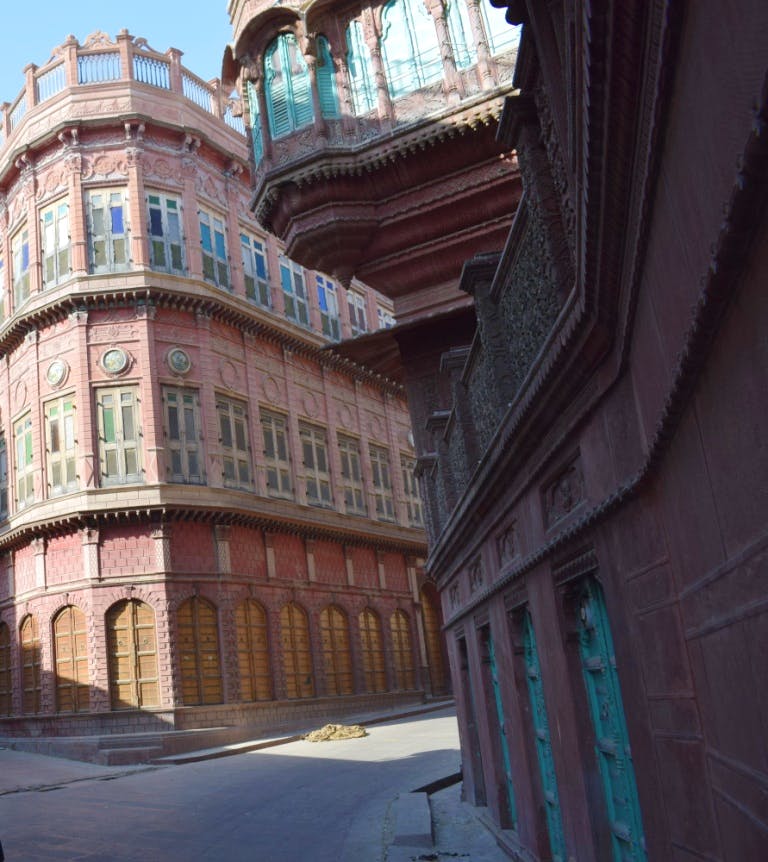Once home to the wealthy merchants, this part of the city is now a tale of red sandstone, chisels and hammers. Our ride began at a forked entrance. I gazed at probably the most magnificent structure in that area—the façade carved with numerous natural motifs; window shutters drawn. No one lived here; dust had accumulated on the intricately carved doors.
The grand haveli rose high in the sky, the narrow lane making it look taller than any skyscraper. The stone inscription said ‘Rampuria, Bikaner, 1933’. This family was among the wealthier ones, as was evident but it didn’t stay here any longer. While this haveli was close to 100 years old, the oldest ones go back to 400 years. In the entire city, there are around 1,000 such heritage structures, clothed in the dust, as my research later showed.
As we walked closer, motifs from the natural world and the surroundings became clearer. Most of the havelis were built between the 17th and 20th centuries. This area has over 400 of these grand homes. They were an amalgam of influences that the city had seen since its formation in 1478 by the rebel prince of Jodhpur—Rao Bika. Before that, this was ‘jungladesh’, a land of thorny shrubs, which can still be seen on the outskirts as you go deeper into the desert.
The grand haveli rose high in the sky, the narrow lane making it look taller than any skyscraper. The stone inscription said ‘Rampuria, Bikaner, 1933’. This family was among the wealthier ones, as was evident but it didn’t stay here any longer. While this haveli was close to 100 years old, the oldest ones go back to 400 years. In the entire city, there are around 1,000 such heritage structures, clothed in the dust, as my research later showed.
As we walked closer, motifs from the natural world and the surroundings became clearer. Most of the havelis were built between the 17th and 20th centuries. This area has over 400 of these grand homes. They were an amalgam of influences that the city had seen since its formation in 1478 by the rebel prince of Jodhpur—Rao Bika. Before that, this was ‘jungladesh’, a land of thorny shrubs, which can still be seen on the outskirts as you go deeper into the desert.

